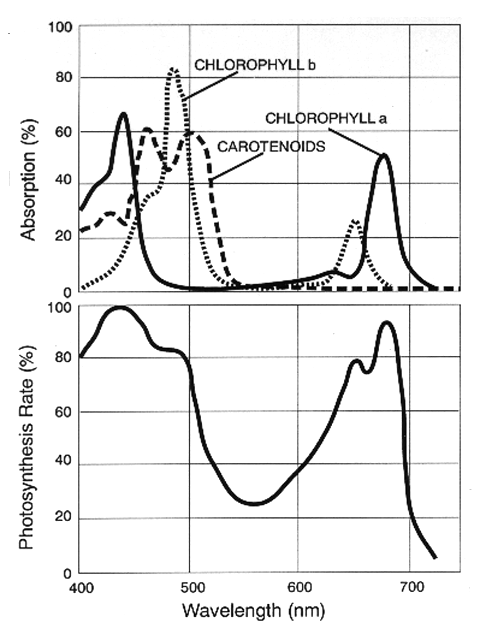What does PAR stand for?

PAR is one of the more important factors to consider when considering, comparing, or otherwise evaluating aquarium lighting. The term PAR is an abbreviation for a more scientific-sounding term: Photosythetically Active Radiation. You will convince your friends and family of your ‘fish nerd’ status if you drop that little nugget at dinner.
You may be thinking, ‘that’s great, you knew what PAR stands for, but what does it mean?’ Well, unfortunately, we have to dive a little deeper into geek-dom to explain it. If I could take you back to science class, you may remember that light is both a wave and a particle and that there are all sorts of ‘types of light,’ like infrared, visible and ultraviolet. Well, think of PAR (Photosynthetcally Active Radiation) to be the light (radiation) that promotes (active) photosynthesis. The illustration above, from Wikipedia, shows the wavelengths of PAR. PAR, scientifically, delineates which light is available for photosynthesis.
That is still a little nerdy for my liking—so here’s my simple man’s takeaway. Photosynthetic bacteria and plants take light energy and convert it into sugar through the process of photosynthesis. So think of PAR as a way to categorize the possible ‘nutritional value’ of the light to your coral, clams or algae. The higher the PAR value (which is measured by a PAR meter also known as a quantum light meter), the more energy is available for photosynthesis, and therefore the greater the potential for life-sustaining sugar to be created from light and CO2.
You can (and should) use a PAR meter to measure the ‘nutritional value’ of your aquarium light at various depths in your tank, and over time, to ensure you are meeting the light demands of the photosynthetic species you keep. If you are thinking about upgrading your lights, you could also use the PAR rating to make an educated (and scientific) decision about which lights are right for you.
Leave a Reply